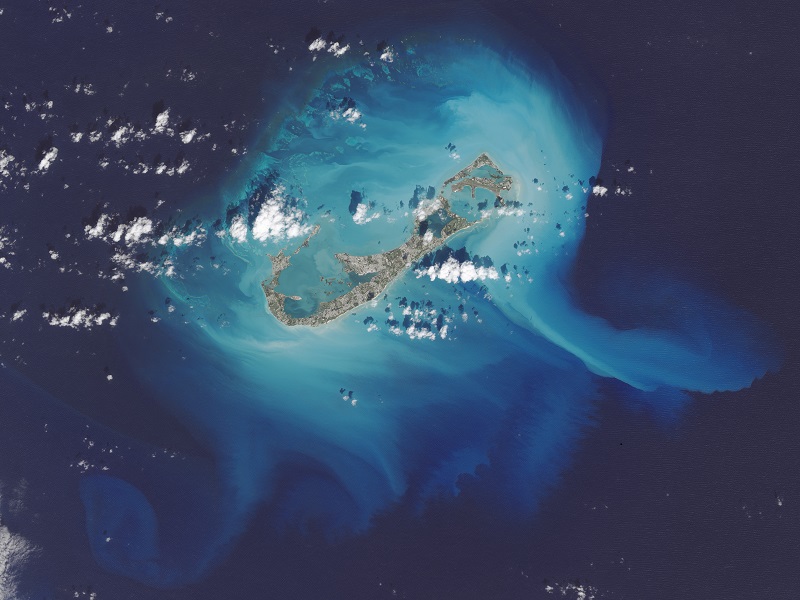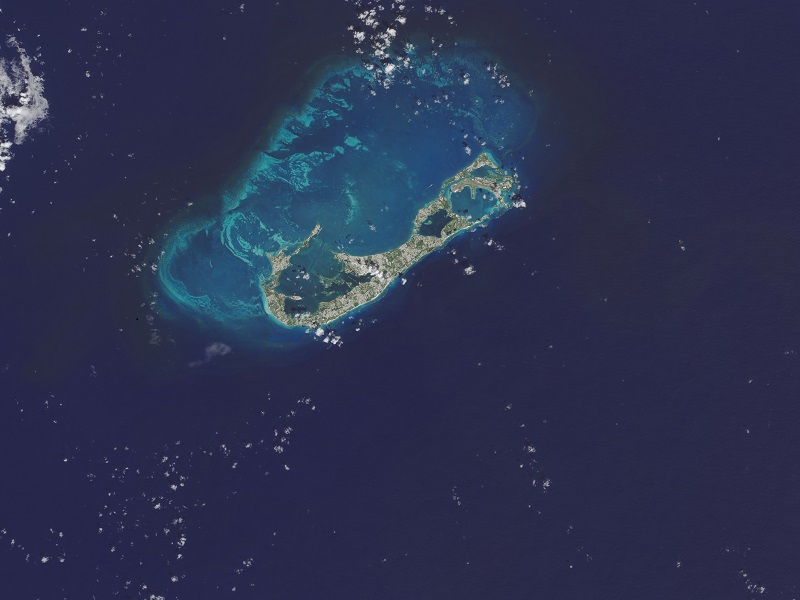Hurricane Gonzalo Stirs Up Miles of Sediment Around Bermuda (Photo)

Hurricane Gonzalo swept across Bermuda earlier this month, and a set of before-and-after satellite images reveals that Gonzalo's powerful winds stirred up miles of the sediment that helps form the foundation of the tiny island nation.
The storm whipped around calcium carbonate sediments from the island's surrounding coral reefs. In the image captured after Hurricane Gonzalo passed over Bermuda, huge swaths of the sediment radiate out from island, some stretching nearly 19 miles (30 kilometers).
The longest streaks extend to the southeast of the island, which likely means the final winds from Hurricane Gonzalo blew in from the northwest, NASA said. The Earth-watching Landsat 8 satellite captured the first picture on Oct. 2 and the second picture on Oct. 18, one day after Hurricane Gonzalo hit Bermuda. [Hurricanes from Above: See Nature's Biggest Storms]
Coral reefs surround the island, producing huge amounts of calcium carbonate. A reef system like the one around Bermuda can create as much calcium carbonate as hundreds of square miles of phytoplankton in the open ocean.
The calcium carbonate created by phytoplankton spreads freely in ocean waters and eventually dissolves, but the calcium carbonate produced by coral reefs builds up in huge piles of sediment and eventually forms islands like Bermuda.
But storms like Hurricane Gonzalo can move huge chunks of sediment away from these islands. The streaks visible in the satellite image likely consist of a mixture of carbonate sediment and beach sand. Incoming weather patterns sometimes cool the stirred-up sediment, making it heavier than the surrounding water. This causes the sediment to sink and eventually dissolve.
This recycling of calcium carbonate is part of a normal ocean cyclethat helps neutralize the extra carbon dioxide produced by fossil fuels and coal that eventually dissolves into the ocean. Still, as more and more carbon dioxide floods the world's oceans, it becomes more difficult for coral reefs and phytoplankton to make calcium carbonate and keep the recycling process going.
Get the world’s most fascinating discoveries delivered straight to your inbox.
Hurricane Gonzalo was a category 2 storm with winds around 110 miles per hour (177 km/h) when it hit Bermuda and knocked out much of the island's power. The storm did not result in any deaths, but it did cause between $200 million and $400 million in property damage, according to NASA.
Follow Kelly Dickerson on Twitter. Follow us @livescience, Facebook & Google+. Original article on Live Science.

 Live Science Plus
Live Science Plus






